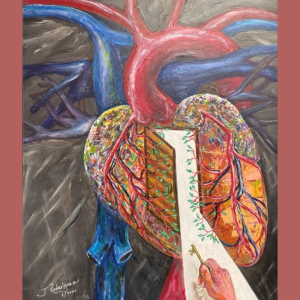Carotid endarterectomy is a surgical procedure that involves removing plaque buildup from the carotid arteries, which are located in the neck and supply blood to the brain. This blog post aims to provide you with a comprehensive understanding of carotid endarterectomy, including its purpose, procedure, and why you might need one.
What is Carotid Artery Disease?
Before delving into carotid endarterectomy, it’s essential to grasp the concept of carotid artery disease. Over time, the carotid arteries can become narrowed due to the accumulation of fatty deposits called plaques. This condition, known as atherosclerosis, restricts blood flow to the brain, potentially leading to a stroke or transient ischemic attack (TIA), often referred to as a mini-stroke.
Purpose of Carotid Endarterectomy:
Carotid endarterectomy aims to reduce the risk of stroke by removing the plaque buildup from the carotid arteries. By restoring normal blood flow, the procedure helps prevent the development of  a full-blown stroke or TIA.
a full-blown stroke or TIA.
Indications for Carotid Endarterectomy:
Significant carotid artery narrowing: Typically, a stenosis of 70% or more is considered significant, but the decision to undergo surgery depends on several factors, including your overall health and the presence of symptoms.
Experienced a recent TIA or minor stroke: If you’ve had a transient ischemic attack or a minor stroke, carotid endarterectomy may be recommended to prevent further, more severe strokes.
Asymptomatic with high-grade stenosis: In some cases, carotid endarterectomy may be considered for individuals without symptoms but with high-grade carotid stenosis (greater than 80%) due to the increased risk of future strokes.
The Carotid Endarterectomy Procedure:
Here’s a general overview of what you can expect during a carotid endarterectomy procedure:
Anesthesia: You will be given either general anesthesia (where you’re asleep) or local anesthesia (where only the neck is numbed).
Incision: A small incision is made in the neck over the affected carotid artery.
Artery Access: The vascular surgeon carefully opens the carotid artery to access the plaque inside.
Plaque Removal: The plaque is removed from the artery, aiming to restore normal blood flow.
Closure: The artery is then closed, and the incision in the neck is stitched or stapled.
Recovery: After the procedure, you will be closely monitored in the hospital for a day or two before being discharged. The recovery period may vary, but most individuals can resume their normal activities within a few weeks.
Carotid endarterectomy is a well-established procedure aimed at reducing the risk of stroke in individuals with significant carotid artery disease. By removing plaque buildup from the carotid arteries, the procedure helps restore normal blood flow to the brain, potentially preventing future strokes. If you’ve been recommended to undergo carotid endarterectomy, it’s crucial to discuss any concerns or questions you may have with your healthcare provider. Remember, the decision to undergo the procedure should be made based on a careful assessment of your individual medical condition and the risks and benefits involved.
























